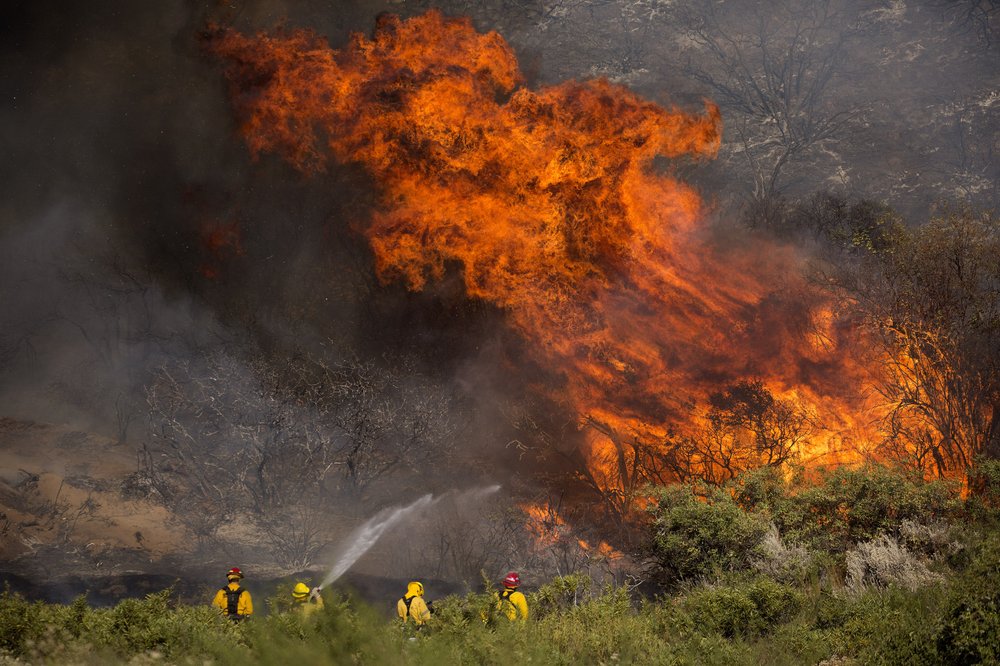A California wildfire raging through dry brush and timber east of Los Angeles, forcing thousands of people from their homes, was likely sparked by burning soot from the exhaust of a diesel truck, investigators said on Monday.

And it was only five per cent contained as of Monday, fire officials said.
The fire posed an immediate threat to some 2,400 homes, prompting mandatory weekend evacuations of some 7,800 residents, said Fernando Herrera, a Riverside County Fire Department captain and spokesman for the California Department of Forestry and Fire Protection (CalFire).
One house and two out-buildings were destroyed, CalFire said.
By Monday the flames had spread primarily to the east and north into rugged wilderness of the San Bernardino National Forest, and away from densely populated areas, U.S. Forest Service spokesman David Cruz told Reuters. But all evacuation orders remained in effect, he said.
The fire resulted from a “vehicle malfunction, specifically, a diesel-fueled vehicle emitting burning carbon from the exhaust system,” based on physical evidence and multiple eyewitnesses, CalFire and county fire officials said in a statement.

Get daily National news
Herrera said particles of soot from the unidentified vehicle ignited dry grass along a roadside that grew into the larger fire.
Nearly 2,300 firefighters were battling the Apple Fire, which was burning in an area with no recent fire history. The blaze was being driven chiefly by record-low moisture content in the burning vegetation, fire officials said.

The Apple was the most serious of at least 18 active blazes across California on Monday. Year to date, California wildfires have charred some 204,000 acres, compared with 46,000 acres blackened during the same period in 2019, state records show.
Scientists point to lengthy droughts and longer-than-normal stretches of extreme heat as evidence of climate change that has steadily intensified and prolonged the wildfire season across the Western United States in recent years.







Comments